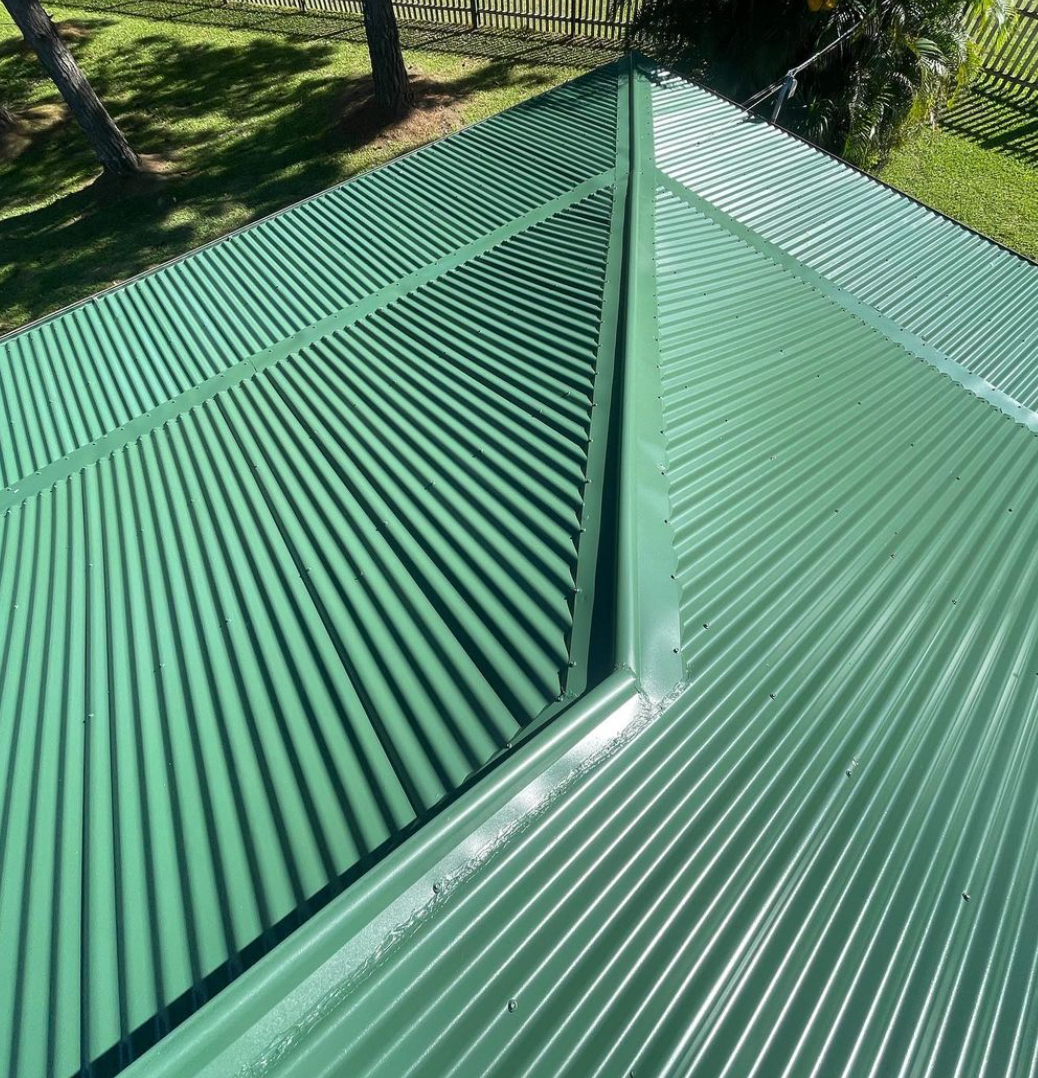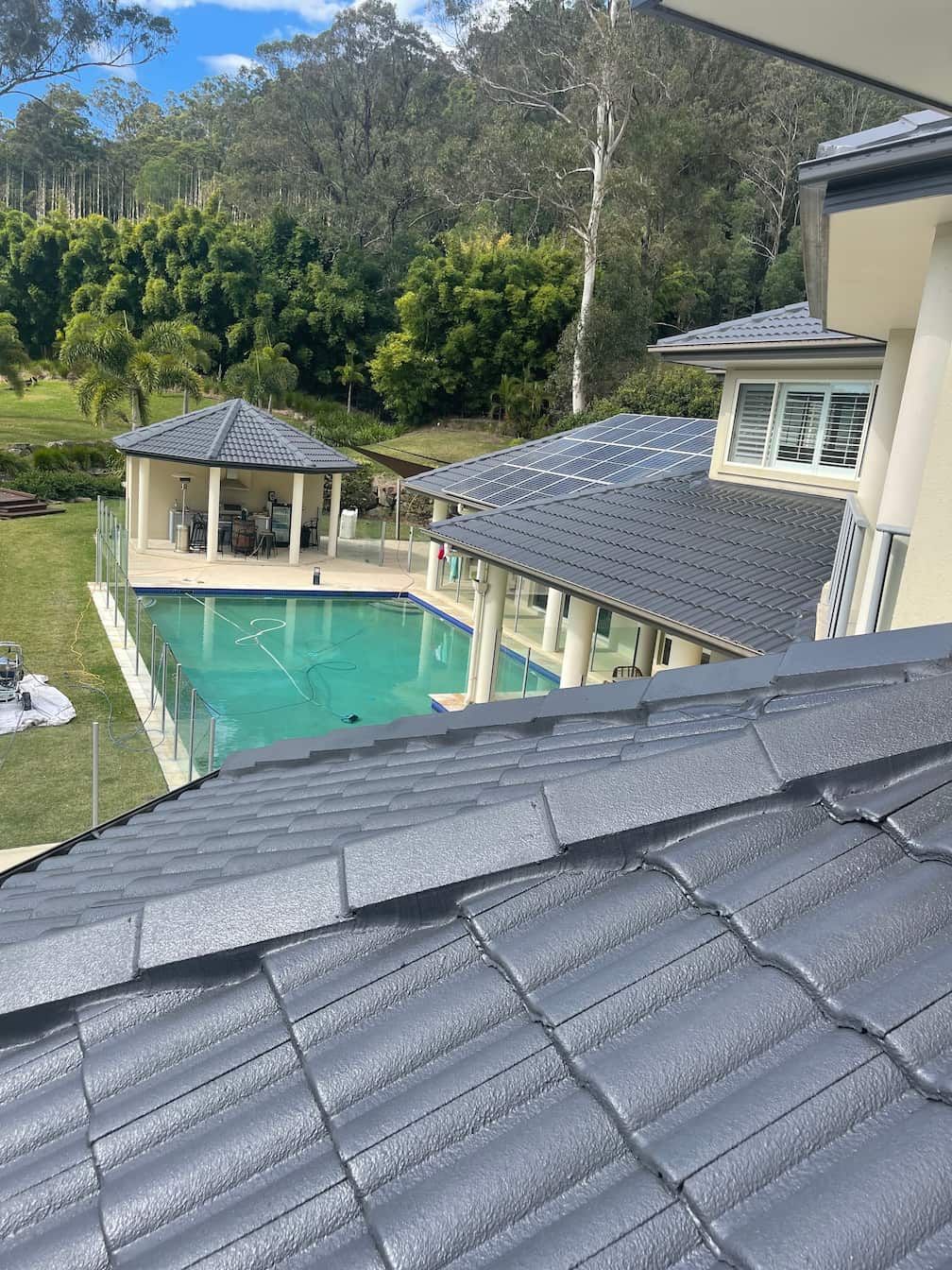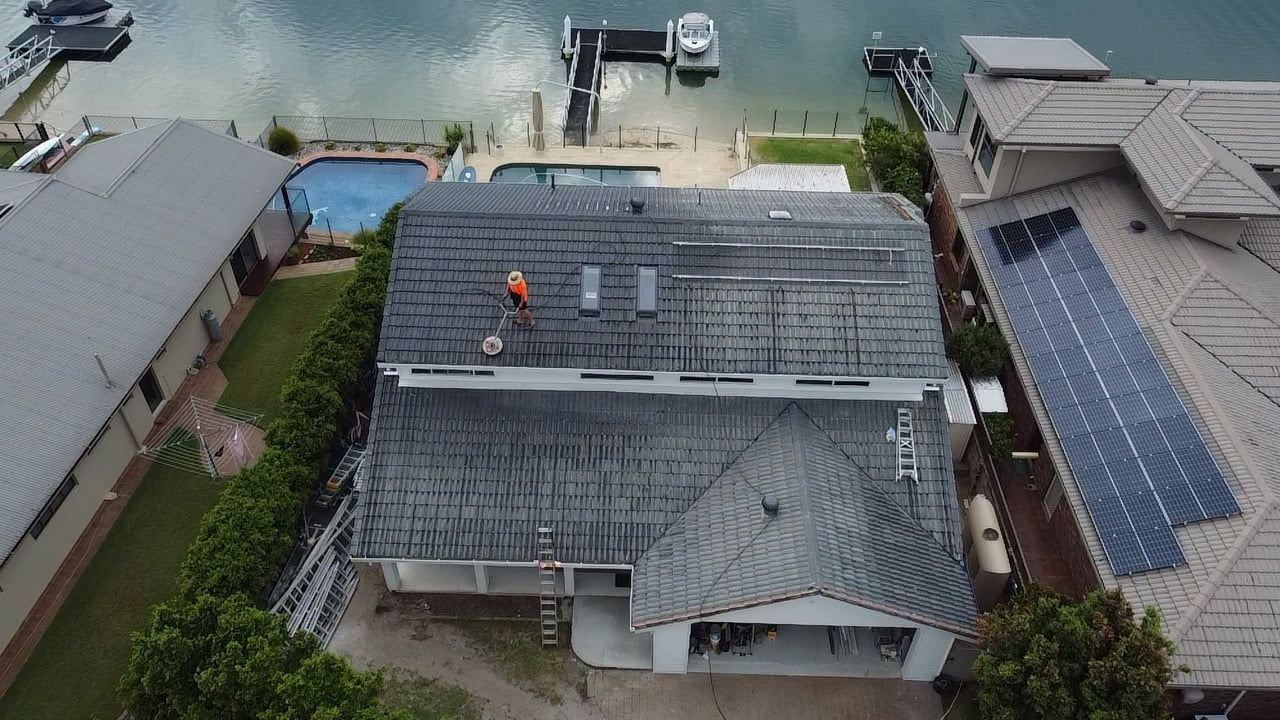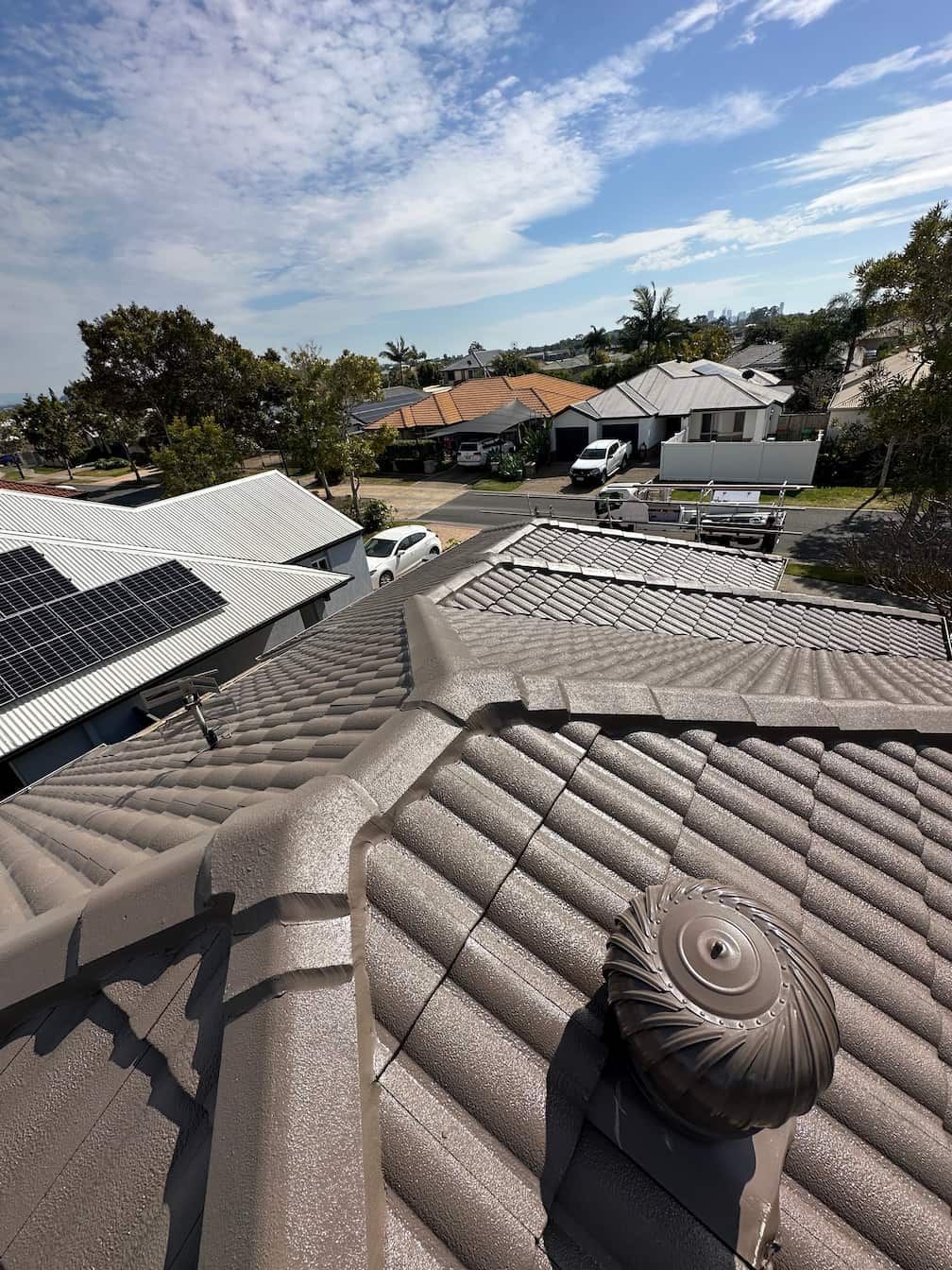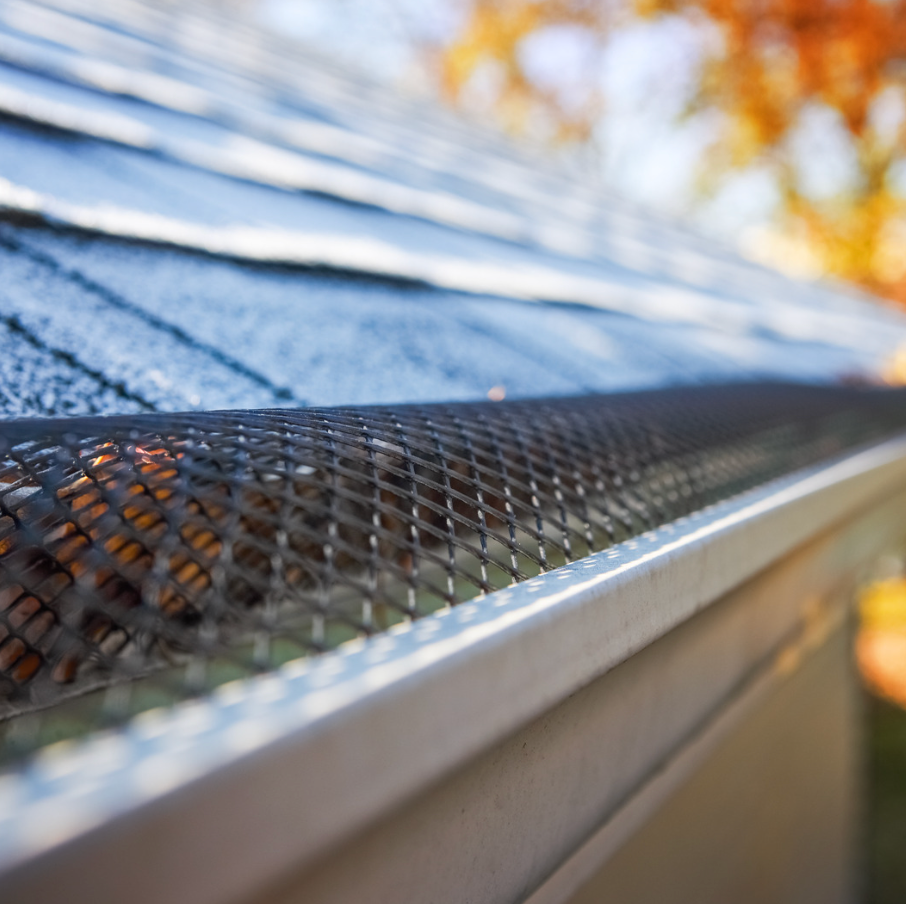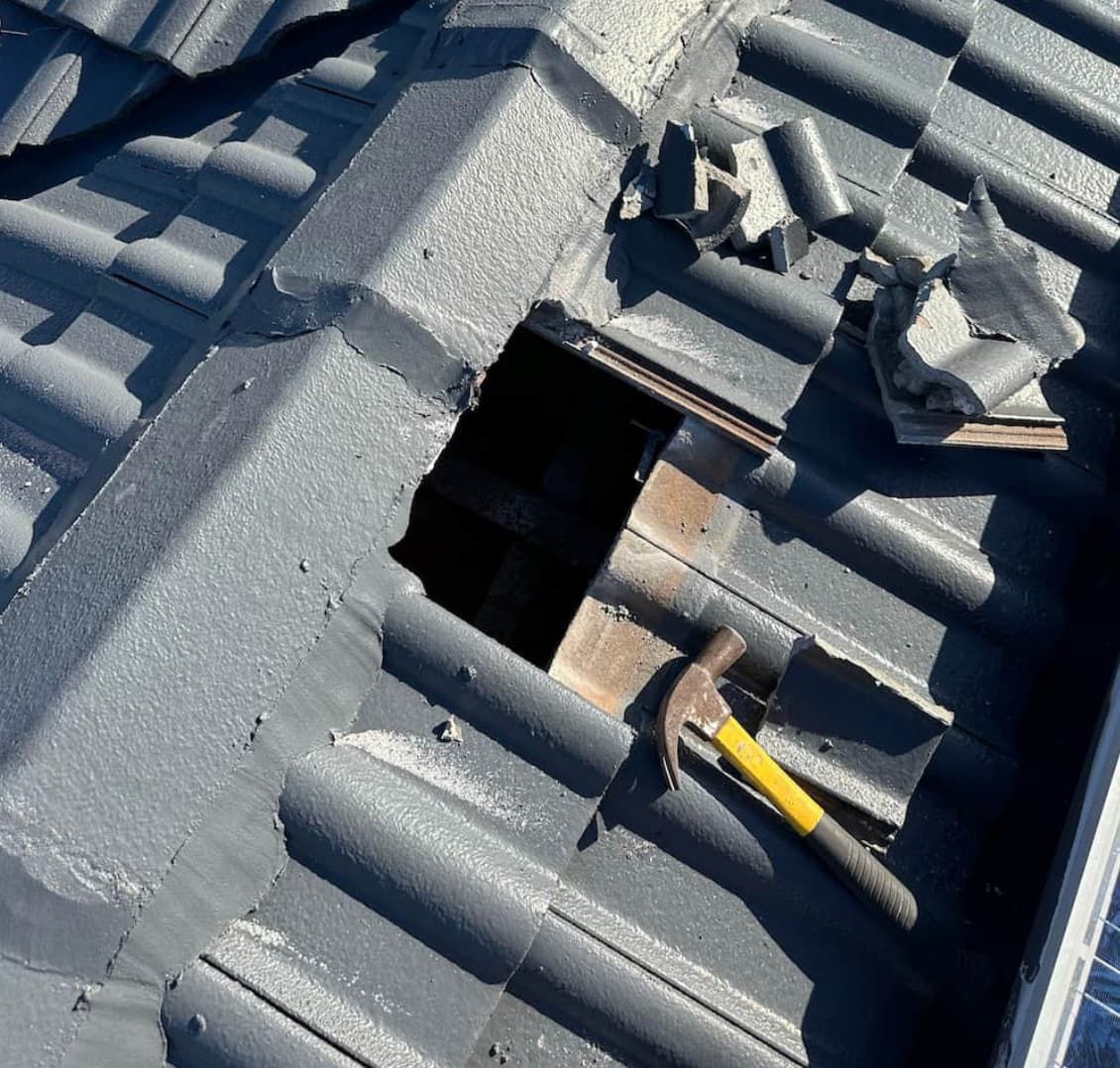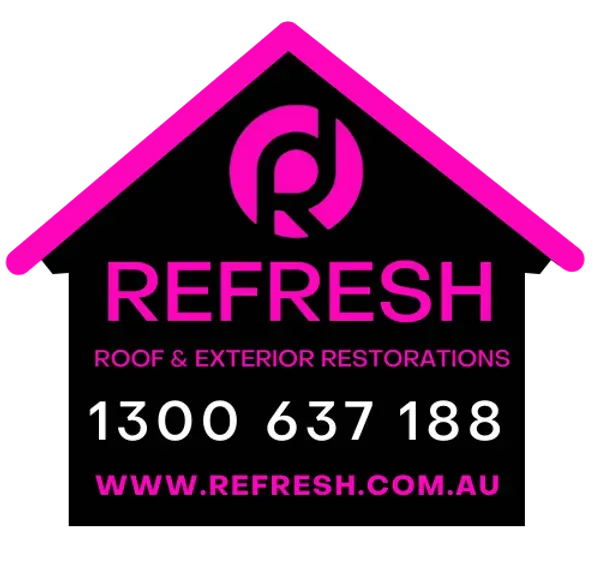Colorbond vs Tile Roof: Your Ultimate Guide
When it comes to selecting the right roofing for your home, the debate between Colorbond® roofing and traditional tile roofing remains a popular topic. Each roofing material has distinct benefits and disadvantages, and this guide will explore those key differences.
Colorbond Roof vs Tile Roof – Which is Best?
Choosing between Colorbond and tile roofs largely depends on your specific needs, location and style preferences. Colorbond, known for its resilience and sleek appearance, offers a modern look and is especially popular in Australia due to its resistance to harsh weather. Tile roofing, on the other hand, provides a more traditional, timeless aesthetic and offers solid thermal insulation.
Let’s explore these two options in greater detail.
What is Colorbond® Roofing?
Colorbond roofing is a type of metal roofing made from high-quality steel coated with a unique layer of paint, designed to withstand the elements. Developed in Australia, Colorbond roofing is highly durable and lightweight, and offers a sleek, modern appearance suitable for both residential and commercial properties.
Its unique blend of performance and style makes it a premium choice for homeowners looking for a long-lasting roofing solution.
What Colours and Styles Are Available for Colorbond Roofing?
Colorbond roofing is available in a wide variety of colours, providing flexibility in design. The following are the most popular choices:
- Monument – A deep, rich grey with a modern appeal
- Woodland Grey – A classic neutral tone that blends with natural surroundings
- Charcoal – A bold, dark grey ideal for contemporary designs
- Surfmist – A lighter, soft shade suited for coastal properties
- Shale Grey – A versatile grey that complements a variety of exteriors
- Dover White – A fresh, clean white that reflects heat effectively
- Coastal Terracotta – A warm, earthy tone with a Mediterranean feel
- Basalt – A cool, medium grey for a balanced aesthetic
- Slate Grey – A timeless shade that complements traditional and modern homes alike
With these options, homeowners can achieve virtually any desired aesthetic, making Colorbond a flexible roofing choice for those with specific design visions.
What Are the Benefits of a Colorbond Roof?
Colorbond roofing offers several notable benefits:
- Durability: Colorbond is resistant to corrosion, chipping and cracking, making it suitable for Australia’s varying climate.
- Low Weight: Being lighter than tiles, Colorbond roofs put less stress on a home’s structural framework.
- Energy Efficiency: Certain Colorbond colours have heat-reflective technology, reducing cooling costs in hot climates.
- Minimal Maintenance: Unlike tile roofs, Colorbond requires little upkeep, as it doesn’t suffer from algae growth or cracking.
- Modern Look: Colorbond roofs provide a sleek and modern appearance, adding contemporary appeal to any home.
What Are the Disadvantages of a Colorbond Roof?
Despite its advantages, there are some downsides to choosing Colorbond:
- Noise: Colorbond roofs can be noisier than tile roofs during heavy rain. Adding insulation can reduce this but at an additional cost.
- Cost: While Colorbond is durable, the upfront cost can be higher than basic tile roofing options, though it may offer savings in the long run due to its low maintenance needs.
- Limited Repairs: If a section of a Colorbond roof is damaged, repairs can be more complex than with tiles, sometimes requiring entire sheets to be replaced.
Maintenance Requirements FOR Colorbond Roofing
One of the key advantages of Colorbond roofing is its low maintenance requirements. To keep a Colorbond roof looking its best, homeowners should regularly:
- Rinse off dirt: A simple hose down every six months can prevent dirt buildup.
- Inspect for scratches or damage: While Colorbond is highly durable, checking for scratches or dents helps maintain its appearance.
- Clear debris from gutters: Leaves and other debris can accumulate in gutters, leading to drainage issues. Regular cleaning can prevent this.
A Colorbond roof, with minimal effort, can remain attractive and functional for decades.
Installation Process for Colorbond Roofing
To ensure your Colorbond roofing is installed correctly, it's important to work with a team of roofing experts. The installation process is as follows:
- Preparation: The roof structure is prepared to ensure it can support the lightweight steel.
- Installing Sheets: Colorbond sheets are then laid and secured with screws or fasteners. Precision is essential for aligning sheets properly.
- Adding Insulation & Flashing: Depending on climate requirements, insulation may be installed under the sheets, and flashing is added to seal gaps and prevent leaks.
- Final Checks: Once installed, the roof is inspected to confirm it’s watertight and secure.
Colorbond Roof vs. Tile Roof Cost
When comparing costs, both initial installation and long-term expenses should be considered.
- Colorbond Roof: Typically has a higher upfront cost, but its low maintenance and long lifespan can make it a cost-effective choice over time. Prices vary based on colour, finish, and any additional insulation requirements.
- Tile Roof: Generally, tiles are less expensive upfront, but they may require more frequent maintenance. If damaged, individual tiles can be replaced, which can reduce repair costs.
Ultimately, Colorbond roofs might be more cost-effective over the long term due to their low upkeep, while tile roofs may initially be more affordable but can incur maintenance expenses over time.
What Are Roof Tiles?
Roof tiles are traditionally made from either concrete or terracotta. These materials are moulded into tile shapes and hardened through baking, creating a durable and weather-resistant surface. Tile roofs offer a classic, timeless look and provide excellent insulation. Many Australian homes feature tile roofing due to its traditional charm and excellent performance in various weather conditions.
What Colours and Styles Can a Tile Roof Be?
Tile roofs come in an array of colours and finishes, including:
- Terracotta – A warm, orange-red colour often seen in traditional Mediterranean-style homes.
- Charcoal & Grey Tones – Popular choices for a modern look.
- Earth Tones – Browns, tans, and greens that blend with natural surroundings.
- Gloss & Matte Finishes – Tiles are available in both high gloss and matte finishes to match various styles.
With their wide range of colours and textures, tiles offer flexibility for homeowners looking to match or enhance the aesthetic of their property.
What Are the Benefits of Choosing a Tile Roof?
Tile roofing offers numerous benefits:
- Thermal Insulation: Tiles provide excellent insulation, keeping homes cooler in summer and warmer in winter.
- Sound Reduction: Tile roofs are naturally better at sound insulation compared to metal roofs, offering a quieter home environment.
- Longevity: Tile roofs have a long lifespan, often lasting 50 years or more if properly maintained.
- Fire Resistance: Both concrete and terracotta tiles are non-combustible, providing additional safety in fire-prone areas.
- Timeless Appeal: The aesthetic of tile roofing is often preferred for its classic, traditional charm.
What Are the Disadvantages of Choosing a Tile Roof?
Tile roofs also come with their share of drawbacks:
- Weight: Tiles are much heavier than Colorbond, meaning they require strong structural support. This may not be suitable for all homes.
- Fragility: While durable, tiles can crack if heavy objects or individuals walk on them, requiring cautious handling.
- Maintenance: Tile roofs require regular cleaning and may need individual tiles replaced over time due to moss or algae growth.
- Higher Maintenance Costs: Although tile roofs are relatively affordable upfront, they may require higher maintenance costs over their lifetime due to cracking and tile replacement needs.
Roof Tile Maintenance Requirements
Tile roofs generally require more maintenance than Colorbond to ensure their longevity and aesthetic appeal:
Regular Cleaning: Mould and algae can grow on tile roofs, particularly in humid or shaded areas. Cleaning once or twice a year with a gentle detergent or specialised cleaning solution can prevent buildup.
Inspect for Cracks & Chips: Individual tiles can crack due to weather or physical impact. Inspecting tiles for damage periodically and replacing any broken ones helps maintain the roof’s integrity.
Check Flashing & Sealant: Tiles often have areas of flashing and sealant, which can deteriorate over time. Regular inspection and reapplication, if needed, ensure waterproofing.
Clear Gutters & Valleys: Similar to Colorbond roofs, tile roofs require gutters and valleys to be cleared to prevent water damage or pooling.
Maintaining a tile roof may take a little more work than Colorbond, but regular upkeep will keep it looking good and functioning well for years.
The Roof Tile Installation Process
When it comes to installing tiles on your roof, it's recommended to consult a professional to ensure correct installation.
- Structural Reinforcement: Tile roofs are heavier, so the roof structure must be reinforced, especially in older homes.
- Laying the Underlayment: A waterproof underlayment is laid to provide an additional moisture barrier.
- Tile Placement: Tiles are then placed, beginning from the bottom and working upwards, with careful spacing and alignment.
- Securing & Finishing: Flashing and sealants are added around edges and joints, followed by a final inspection to ensure proper installation.
Conclusion
In conclusion, both Colorbond and tile roofing come with their unique advantages and disadvantages. While Colorbond provides a sleek, modern appearance with minimal maintenance, tile roofs offer excellent insulation and a classic aesthetic.
Each option requires consideration of factors such as climate, budget and personal preferences. Whether you value the low maintenance of Colorbond or the timeless charm of tile roofing, your final decision should align with the specific needs and style of your home.
If you need assistance choosing the best material for your roof, get in touch with Refresh Roofing & Exterior Restorations on the Gold Coast.
Written by Reece Worboys
Reece has been in the Gold Coast roofing game for over 15 years and is a trade-qualified roof plumber and painter/decorator. He's also a QBCC licensed supervisor and roofing contractor.
